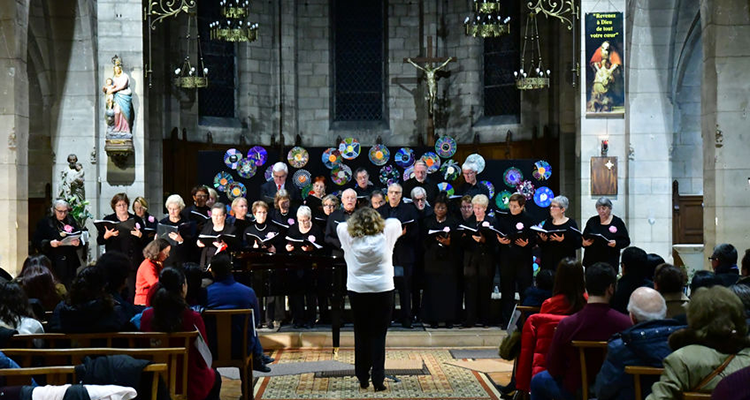Can You Hear Me Now?
 Recently our rAVe colleague Jacob Blount wrote, in the rAVe HOW [House of Worship] newsletter, about a video of the Angel City Chorale showcasing very poor choir miking, and how this seriously detracted from the value and presentation intended — hardly a clean choir sound.
Recently our rAVe colleague Jacob Blount wrote, in the rAVe HOW [House of Worship] newsletter, about a video of the Angel City Chorale showcasing very poor choir miking, and how this seriously detracted from the value and presentation intended — hardly a clean choir sound.
I’m probably dating myself, but I couldn’t help but think about the Verizon Wireless commercial from a few years back with the spokesperson who kept asking, “Can you hear me now?”
I’ve written about this topic in the past. There are plenty of resources, videos and whitepapers out there that teach proper technique for getting/balancing a clean choir sound. However, there’s clearly room for improvement if a popular choir group is posting and circulating a video like the one Jacob highlighted. Somebody wasn’t paying enough attention (or at least not sufficient attention) to the content to care about how the choir, likely made up entirely of volunteer performers, was represented.
It could merely be a case of the choir not having anything else to work with, but frankly, I doubt that is the case. If there was a recording being made, then the videographer ignored rule number one of HOW video production: Monitor both the video and audio feeds!
Certainly, the people involved would have wanted (I hope) to look and sound their best, especially if the performers were making the video for circulation. Did anyone let them see this in advance? Did anyone even check on the final product before posting the content? Did anyone care about clean choir sound?
What do you think? Odds are the answer to these questions is no. Frankly, this is not an acceptable idea. If the choir is going to showcase its performances, the volunteers or paid staff should expect that the people they work with and the respective HOW will make everyone sound as clear as possible within the limits of technical capability.
It would seem that in this case, for reasons unknown, that particular concept was left at the sanctuary door. Maybe it’s old fashioned to say this, but… it does matter. If you don’t think it does — clearly, the people who posted the video in question didn’t — maybe you shouldn’t be doing AV for worship at all! Yes, the message is the heart of any worship service. However, the quality of the delivery of that message is essential, as well.
As an AV person, you’re not creating the message, but instead impacting how that message is perceived and understood. You are also imperative in measuring how effective it will be in fulfilling the worship goals of the particular congregation, its leadership and its pastoral team.
In every HOW project we have ever worked on, the one inviolate rule is and always has been: the clarity of the spoken word is the core goal of any good design. However, spoken word is only a portion of the worship experience (with clean choir sound certainly being another). It’s undoubtedly vital but is often only one of several key elements in creating and delivering an engaging, satisfying experience for a congregation.
Congregations evolve and worship styles adapt. Content and people change. The physical facility may evolve and grow. Still, the bottom line never changes: people come to a HOW for a specific purpose, and the technology must enable that purpose rather than hindering it in any way!
We have learned over the years to never sign off on any project or assume we are finished working until all the people who want to use the system or worship in the space are comfortable with the results. While this might seem tedious or a bit compulsive, it ensures that the final result delivers the message and enhances the results.
I know that if you don’t complete this approval process and you don’t get “buy-in” from everyone involved, the project can come back to haunt you. It could also create a situation where you cannot produce a successful outcome — because you didn’t determine what the final result needed to be UP FRONT!
Every HOW has a style and a set of goals for its worship experience, even if unvoiced. My advice to you: Find out what those style goals are and work toward achieving as many of them as feasible (within the system’s fiscal and technical limits). But never, never, never settle for less than the best you can, because if you do, somebody else will have to fix your error and that will never be to your benefit.





